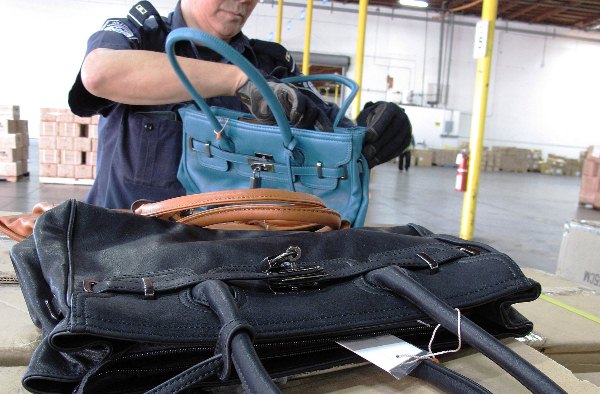The World Customs Organization (WCO) said that in 2018, it received reports documenting 34,120 cases of trafficking of products covered by intellectual property rights (IPR) in 61 countries.
These cases involved 60,134 seizures and yielded 55,144,643 pieces of IPR products, the WCO’s Illicit Trade Report 2018, released this month, said.
According to WCO data, customs administrations seized significantly fewer IPR products in 2018 than in 2017, despite vastly more IPR seizures.
IPR seizures rose from 27,357 in 2017 to 60,134 in 2018—an increase of 32,777 seizures (119.8%). But seized IPR pieces dropped in number from 372,614,484 in 2017 to 55,144,643 in 2018—a decrease of 85.2%.
The uptick in the number of seizures was largely due to increases in seizures reported by North America, said WCO.
The decrease in the number of pieces seized, on the other hand, could be attributed both to moving beyond an outlier seizure in South America that had boosted the total from the previous year and to a sharp decline in the quantity seized by the Middle East.
Overall, the top 15 reporting countries submitted 69% more cases in 2018 than they did the previous year. The majority of this growth was in the United States, which reported 19,621 more cases in 2018, a remarkable 374.9% increase. Notable growth was also reported by Mexico, which did not report a single case in 2017 but reported 327 in 2018, and Chile, which increased from one case in 2017 to 740 cases in 2018. These 15 countries accounted for 97.8% of the 34,120 IPR cases reported, said the report.
The total number of reported IPR seizures increased from 27,357 in 2017 to 60,134 in 2018, a jump of 119.8%. Despite this increase, however, the number of pieces seized decreased by 85.2%, dropping from 372,614,484 to 55,144,643.
Fewer pieces were seized across all categories from 2017 to 2018, but both the games and toys and the clothing categories saw the sharpest declines, plunging 97% and 91.4%, respectively, and accounting for much of the overall decline in the number of pieces seized last year.
This sharp drop owes much to an outlier case in 2017, wherein 18,307,000 Pokemon pieces were seized at the seaport in Montevideo, Uruguay.
Notably, the number of seizures recorded increased for all IPR products categories aside from mobile phones and accessories and toiletries/cosmetics.
Of the 60,134 seizures in 2018, 70.6% were discovered in mail parcels, but contraband in mail parcels accounted for only 14.7% of the total number of pieces of IPR products seized in 2018.
Seizures executed on vessels made up the largest percentage in the number of pieces seized, constituting 57.3% of the overall total. Meanwhile, the single largest seizure category of IPR products pieces conveyed by vessel was the other category (11,518,446 pieces).
Consistent with trends in 2017, the overwhelming majority (89.4%) of IPR products shipments were reported while the contraband was being imported.
Only the United States and the Russian Federation reported more than a single case executed during export, totaling 30 and nine, respectively. The United States accounted for 77.1% of import cases, 66.7% of export cases, and 52.8% of transit cases. Only Germany (1,246) reported more than 1,000 transit cases.
The United States and Germany reported the widest variety of product types in the greatest quantities, recording 44,155 and 3,241 seizures, respectively. Textiles other than clothing appeared least often as a category. The three categories that had the most countries reporting more than one seizure were other, accessories, and footwear.
Far fewer IPR cases were reported with known routes in 2018 (10,332 cases) than in 2017 (19,730 cases), in large part because the United States, which reported 72.8% of the total number of IPR cases, reported only its involvement in the case and not the full route.
Asia-Pacific as top origin region
The Asia-Pacific region, on the other hand, appeared in 77.3% (7,993) of IPR cases with known routes. So, too, was the Asia-Pacific region the origin for the three most common flows: Asia-Pacific to Western Europe (3,193 flows, 30.9%), Asia-Pacific to North America (1,366 flows, 13.2%) and Asia-Pacific to Asia-Pacific (1,256 flows, 12.2%).
The Asia-Pacific region was the point of departure for 99.9% of its total flows, and no other region was involved in that capacity in more than 1,000 flows, although the Middle East came closest, at 933. Of the Middle East’s total flows, 868 (46%) were intraregional.
Finally, Western Europe was the region most frequently implicated as a point of destination, playing this role in 3,885 total flows (37.6%).
In 2018, 140 countries were found to be associated with the global illicit IPR trade, with ten countries also implicated in over 1,000 instances: China (9,264), the United States (5,274), Hong Kong, China (5,032), Saudi Arabia (5,025), the United Arab Emirates (2,934), Germany (2,689), Denmark (2,379), Spain (1,432), Japan (1,224) and Austria (1,170).
Indeed, 81.9% of global illicit IPR product flows in 2018 were tied to these ten countries. Of China’s total flows, 99.6% were executed when IPR products were departing the country, with Hong Kong a close second, executing 97.7% of its flows at departure.
The United States, however, demonstrated the opposite phenomenon: 89.2% of its flows were conducted upon arrival. Of the top 10 countries implicated in illicit IPR product flows in 2018, only Germany noted transit cases as the most prevalent variety of flow, totaling 68.5% of its instances.
Within the 29,232 instances that included known transit information in 2018, IPR products were smuggled along 2,529 unique trafficking routes implicating 1,334 cities. Forty-two cities appeared in at least 100 instances, and four cities surpassed 1,000 instances: Beijing, China (2,803); Victoria in Hong Kong (2,563); Washington D.C., United States (1,531); and Leipzig, Germany (1,325).
Together, these four cities were involved with 28.1% of the total illicit IPR flows reported by participating countries in 2018.
Photo By U.S. Customs and Border Protection









